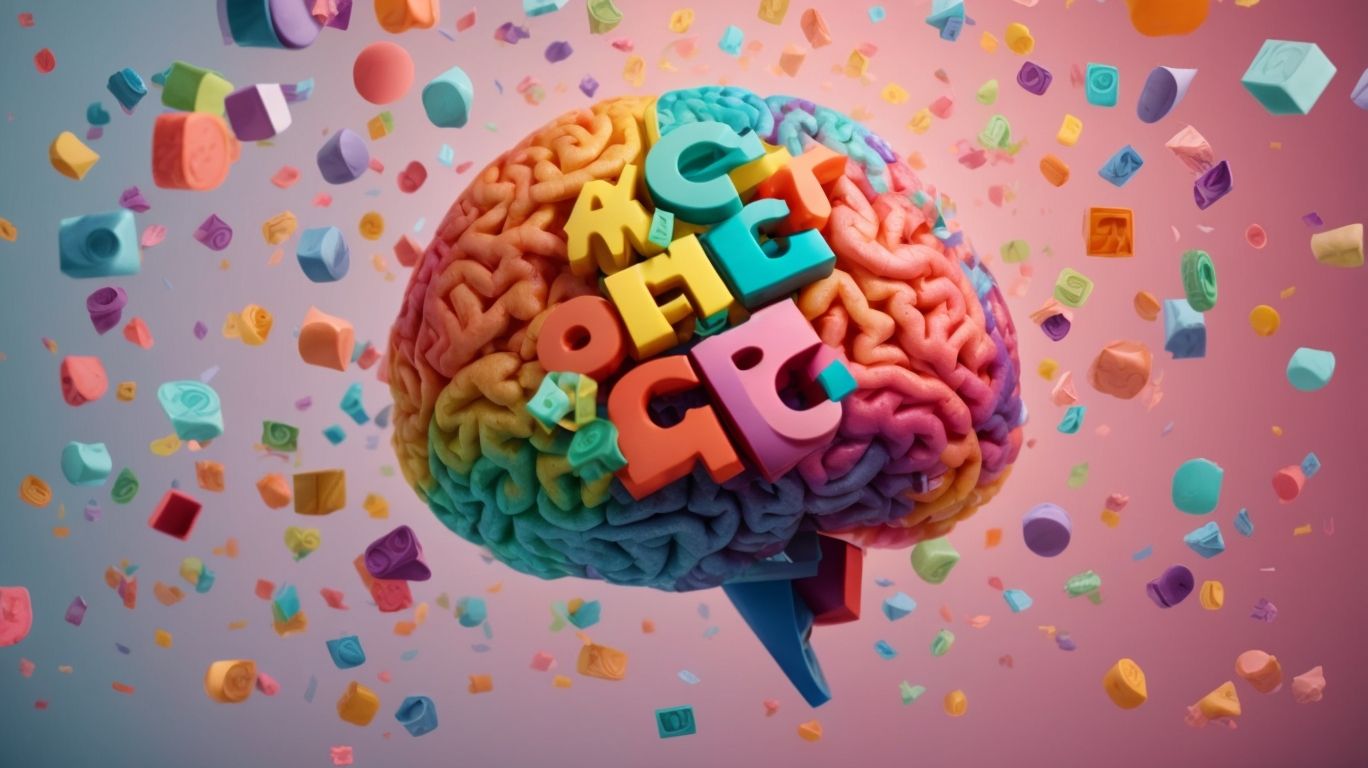Have you ever heard of the ABC model in psychology and wondered what it actually means? In this article, we will explore the components of the ABC model – Affective, Behavioral, and Cognitive – and how it is used in the field of psychology.
From understanding behavior to managing emotions, the ABC model plays a crucial role in various aspects of mental health treatment. We will also discuss real-life examples of the ABC model in action, as well as its limitations. Stay tuned to learn more about this fascinating model!
Contents
What is ABC in Psychology?
The ABC model in psychology refers to the Antecedent-Behavior-Consequence framework used by therapists and clinicians to understand and analyze human behavior.
In therapeutic settings, the ABC model plays a crucial role in identifying triggers that lead to specific behaviors exhibited by clients. By examining the antecedents – the events or situations that precede the behavior, mental health professionals can gain insights into the factors influencing the client’s actions. The behavior itself, encompassing the actions and reactions observed, offers valuable information about the client’s emotional state and coping mechanisms.
The consequences of the behavior, which can be both immediate and long-term outcomes, shed light on the impact of the behavior on the individual and their environment. Through this comprehensive analysis, therapists can tailor interventions and strategies to modify behaviors, promote healthier responses, and achieve positive outcomes for the client.
The Components of ABC Model
The ABC model comprises three essential components: Antecedents, Behaviors, and Consequences, forming the basis for therapists and clients to analyze and modify behavior patterns.
Antecedents refer to the events or stimuli that occur before a behavior takes place. These can be internal or external factors such as emotions, thoughts, environmental cues, or social interactions that influence how a person reacts or responds.
Behaviors are the observable actions, responses, or reactions exhibited by an individual in a given situation. These behaviors can be verbal or non-verbal, intentional or unintentional, and can vary in intensity and frequency.
Consequences are the outcomes or results that follow a behavior. They can be positive (reinforcing) or negative (punishing), influencing the likelihood of the behavior recurring in the future.
Affective Component
The affective component of the ABC model focuses on understanding the emotional responses, beliefs, and consequences associated with specific behavioral patterns.
Emotional regulation plays a crucial role in this component as it involves the ability to identify, manage, and express emotions effectively. When individuals regulate their emotions skillfully, they are better equipped to cope with challenging situations and make informed decisions. Cognitive processes such as perception, interpretation, and memory significantly influence the emotional responses linked to behaviors. These cognitive processes filter and shape the way individuals perceive and react to various stimuli, ultimately determining the behavioral outcomes.
Behavioral Component
The behavioral component of the ABC model delves into the principles of behaviorism, functional analysis, operant conditioning, and classical conditioning to explain and modify observable behaviors.
In behaviorist theories, behavior is seen as a response to specific stimuli in the environment. Operant conditioning, introduced by B.F. Skinner, focuses on the consequences of behavior, reinforcing desired behaviors through rewards or punishments. Classical conditioning, associated with Ivan Pavlov, illustrates how behaviors can be learned through associations.
Functional assessments are crucial in understanding the context and purpose behind behaviors, aiding in developing effective behavior modification strategies.
Cognitive Component
The cognitive component of the ABC model aligns with cognitive behavioral therapy (CBT) principles, focusing on beliefs, thoughts, and their impact on behaviors and consequences.
Within the context of cognitive restructuring, individuals are encouraged to evaluate and challenge their automatic thoughts and underlying beliefs to foster more adaptive responses and emotional regulation. By addressing maladaptive cognitive distortions such as catastrophizing or black-and-white thinking, we can reshape our perception of situations and enhance decision-making processes. This process of reshaping one’s belief system forms the core of cognitive restructuring in CBT, paving the way for more positive behavioral outcomes and improved emotional well-being.
How is ABC Model Used in Psychology?
The ABC model is utilized in psychology by therapists and clinicians to help clients identify triggers, understand behavioral responses, and modify reactions through targeted interventions and structured sessions.
Therapists utilizing the ABC model typically begin by collaborating with clients to identify specific triggers that lead to certain behaviors or emotional responses. By analyzing the Antecedents – what happens before the behavior, the therapists can gain insight into the root cause of these reactions.
Following this, therapists guide clients through the process of exploring the Beliefs or thoughts associated with these triggers, helping them recognize any cognitive distortions or maladaptive patterns.
Challenging and reframing these beliefs is a key aspect of the therapeutic process, as it aids clients in developing more adaptive ways of thinking and responding to triggers.
Understanding Behavior
The first step in using the ABC model involves understanding behavior by examining antecedents, stimuli, behavioral responses, and the resulting consequences in various situations.
When applying the ABC model to behavior analysis, the focus shifts towards recognizing how specific triggers and environmental factors influence an individual’s reactions. By identifying antecedents or events that precede a behavior, analysts can pinpoint patterns in response to certain stimuli. This insight can provide valuable clues about the root causes of behaviors and assist in creating interventions that target the triggers effectively.
Identifying Cognitive Distortions
Another application of the ABC model involves identifying cognitive distortions by analyzing irrational thoughts, maladaptive beliefs, and the resulting emotional responses within the framework of cognitive behavioral therapy.
By breaking down the process into its fundamental components, individuals can gain insight into the connections between their thoughts, beliefs, and emotions. The ABC model, devised by psychiatrist Albert Ellis, aims to challenge and reframe these distorted cognitions, enabling individuals to generate more adaptive responses.
For instance, when a person perceives a situation as catastrophic (A), their belief system (B) influences the emotional consequence (C). Through cognitive restructuring techniques like examining evidence, creating alternative explanations, or challenging negative assumptions, individuals can alter their cognitive patterns and improve their emotional well-being.
Managing Emotions
Therapists and clients use the ABC model to manage emotions by exploring the relationship between beliefs, emotional reactions, and the consequences of specific behaviors.
At its core, the ABC model delves into the notion that it’s not the event itself (Activating Event) that directly causes emotional responses, but rather the Beliefs (B) attached to that event. These beliefs are what shape how one interprets and reacts to situations, leading to emotional consequences. By analyzing and challenging these beliefs, individuals can alter their emotional responses and subsequent behaviors (C) toward a healthier direction.
Examples of ABC Model in Action
The ABC model is applied in real-life scenarios such as anger management, anxiety treatment, and cognitive behavioral therapy (CBT) to help individuals understand triggers, modify behaviors, and improve emotional regulation.
For instance, in anger management sessions, individuals are guided to identify the activating event (A), recognize their beliefs and interpretations (B) about the event, and then learn to reframe and challenge those beliefs by focusing on the consequences (C) of their reactions.
In the context of anxiety treatment, therapists often work with clients to break down the cycle of anxious thoughts (B) triggered by certain situations or stimuli (A), guiding them through exposure techniques to face their fears and gradually reevaluate their responses to fear-inducing scenarios (C).
Anger Management
In anger management, the ABC model assists individuals in identifying triggers, understanding reactive behaviors, and exploring the consequences of their anger responses.
Therapists employ this model to help clients break down their emotional reactions into three distinct components:
- A stands for activating event, which is the trigger that initiates the anger;
- B represents the beliefs or thoughts associated with the trigger, influencing the emotional response;
- C denotes the consequences or outcomes of the individual’s reaction.
By dissecting these elements, individuals can gain insight into the root cause of their anger, modify their behavioral responses, and evaluate the impact on themselves and others. Through this process, clients learn to recognize patterns, develop coping strategies, and make constructive choices in managing their emotions.
Anxiety Treatment
Anxiety treatment utilizing the ABC model involves examining maladaptive beliefs, cognitive distortions, and emotional reactions to develop coping strategies and enhance emotional well-being.
Throughout the treatment process, individuals are guided to identify the Activating Event triggering their anxiety, followed by exploring the irrational Beliefs contributing to the negative emotional response. By engaging in Cognitive Restructuring, they learn to challenge and replace these distorted thoughts with more realistic and adaptive beliefs. Furthermore, Emotional Regulation techniques are incorporated to help individuals manage heightened emotional states and foster a sense of control.
Cognitive Behavioral Therapy (CBT)
In the context of CBT, therapists and clients employ the ABC model to challenge negative beliefs, reframe cognitive distortions, and improve emotional responses through structured intervention sessions.
CBT, known for its evidence-based approach, integrates the ABC model (Antecedent-Belief-Consequence) to identify the triggering event (Antecedent), identify and challenge the negative belief or thought (Belief), and understand the resulting emotional or behavioral response (Consequence). This model serves as a roadmap to address cognitive distortions and dysfunctional beliefs that contribute to emotional distress.
The collaborative nature of the therapeutic process involves therapists guiding clients through exercises that help them recognize and modify their thought patterns. By working together, therapists assist clients in restructuring their cognitive framework, leading to more adaptive behaviors and emotional regulation.
Limitations of ABC Model
Despite its utility, the ABC model has limitations, including oversimplification of behavior, minimal focus on environmental factors, and restricted applicability to complex mental health conditions.
While the ABC model provides a structured framework for behavior analysis, it tends to overlook the nuances of individual behaviors and the intricate interplay of various factors influencing them. This oversimplified approach fails to consider the broader environmental influences that shape one’s actions and reactions.
The model’s emphasis on behavior-consequence relationships may not adequately capture the full spectrum of complex behavior patterns, which often involve multifaceted triggers and motivations.
When dealing with comprehensive mental health issues, such as mood disorders or personality disorders, the ABC model’s narrow focus on observable behaviors may not address underlying psychological processes effectively.
Oversimplification of Behavior
One limitation of the ABC model is its tendency to oversimplify behavior by focusing primarily on observable actions, consequences, and immediate triggers, potentially disregarding deeper contextual factors.
While the ABC model provides a structured framework for analyzing behavior, it may fail to consider the intricate interplay of individual characteristics, past experiences, and environmental influences that contribute to behavioral responses.
Behavior analysts emphasize the importance of looking beyond surface behaviors to understand the underlying functions and motivations behind them, which the ABC model might overlook.
By excluding these nuanced factors, the model may not capture the full complexity of human behavior and the various situational factors influencing it.
Lack of Focus on Environmental Factors
Another limitation of the ABC model is its minimal emphasis on environmental factors, such as social context, situational triggers, and broader influences that shape behavior and responses.
Therapists are increasingly recognizing the significance of considering environmental determinants in combination with the ABC framework. This holistic approach acknowledges that behavior is not solely a product of antecedents and consequences, but is deeply intertwined with the environment in which it occurs.
By integrating an awareness of social, cultural, and situational factors, therapists can gain a more comprehensive understanding of clients’ behaviors and tailor interventions more effectively. This shift towards a more inclusive model highlights the need to address the complex interplay between individuals and their surroundings when analyzing and modifying behaviors.
Limited Application to Complex Mental Health Issues
The ABC model’s applicability is constrained when dealing with complex mental health issues that involve intricate interplay of biological, psychological, and social factors requiring more comprehensive therapeutic interventions.
While the ABC model focuses on the interrelation between affective states, behaviors, and cognitions, its scope may not encompass the nuances of severe conditions like schizophrenia or personality disorders, where symptoms are multifaceted and entrenched. To address these challenges, clinicians should incorporate person-centered therapy or dialectical behavior therapy alongside standardized assessments for a more holistic treatment plan. By integrating various therapeutic modalities and assessments, clinicians can better tailor interventions to the individual needs of those struggling with complex mental health conditions.
Conclusion
The ABC model serves as a valuable framework for therapists and clients to analyze behavior, modify responses, and facilitate positive change through targeted interventions and collaborative efforts.
This model helps individuals break down behavioral patterns into Antecedents, Behaviors, and Consequences, providing insight into triggers and reactions. By understanding these components, therapists can design tailored intervention strategies to address problematic behaviors effectively. The collaborative nature of the ABC model fosters open communication between therapists and clients, leading to a deeper understanding of the root causes of behaviors and encouraging active participation in the therapeutic process.
Frequently Asked Questions
What is the ABC model in psychology?
The ABC model is a cognitive behavioral therapy (CBT) tool used to understand the relationship between thoughts, feelings, and behaviors.
What does ABC stand for in psychology?
In psychology, ABC stands for Activating Event, Belief, and Consequence. This model is used to understand how our thoughts and beliefs influence our behaviors and emotions.
How does the ABC model help in psychology?
The ABC model helps individuals identify and challenge their negative thoughts and beliefs, leading to more effective coping strategies and improved mental well-being.
What is an activating event in the ABC model?
An activating event is an external situation or trigger that leads to thoughts and beliefs in the ABC model. It can be something that happened to us or something we observed.
What is the belief component in the ABC model?
The belief component in the ABC model refers to the thoughts and interpretations we have about an activating event. These beliefs can be either rational or irrational.
How do consequences fit into the ABC model?
Consequences, also known as emotions and behaviors, are the result of our beliefs in the ABC model. By understanding the connection between our beliefs and consequences, we can learn to change our thoughts and improve our outcomes.





